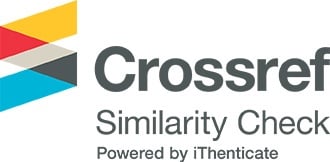Utilizing multimedia technology to create educational tools for teaching national defense and security
Các tác giả
DOI: https://doi.org/10.59294/HIUJS.VOL.6.2024.633Từ khóa:
multimedia, national defense and security, teaching military knowledgeAbstract
Fostering national defense and security knowledge is not merely a policy imperative but a fundamental necessity for our nation's governance, crucial for reinforcing comprehensive national defense and ensuring the safety of our citizens. However, the traditional methods of imparting military expertise in high schools and universities face significant challenges, with outdated textbooks and static lectures often failing to engage students effectively. This article proposes a solution by advocating for the integration of multimedia technology into educational software, offering interactive simulations, virtual reality experiences, and multimedia presentations to bring national defense and security concepts to life. By embracing these innovative tools, we can enhance the quality of national defense and security instruction nationwide, engaging learners more effectively, fostering deeper comprehension, and ultimately strengthening our collective grasp of defense and security matters. By introducing multimedia technology into software development, this article aims to enhance the teaching of national defense and security to students across the country.
Tài liệu tham khảo
[1] Nunes, C., and Edmond Gaible. “Development of multimedia materials.” Technologies for education: potentials, parameters, and prospects. Paris: UNESCO, 94-117, 2002.
[2] Abdulrahaman, M. D., et al., “Multimedia tools in the teaching and learning processes: A systematic review,” Heliyon, 6,11, 2020.
DOI: https://doi.org/10.1016/j.heliyon.2020.e05312[3] Campbell, Keontra C., and Shuyan Wang, “Military Instructors' Perspectives on Interactive Multimedia Application in Military Classrooms,” Military learning, 46, 2023.
[4] Pargaonkar, Shravan, “Enhancing Software Quality in Architecture Design: A Survey-Based Approach,” International Journal of Scientific and Research Publications (IJSRP), 13, 08, 2023.
DOI: https://doi.org/10.29322/IJSRP.13.08.2023.p14014[5] Khan, Arif Ali, et al., “Software architecture for quantum computing systems-A systematic review,” Journal of Systems and Software, 201, 111682, 2023.
DOI: https://doi.org/10.1016/j.jss.2023.111682[6] Pargaonkar, Shravan, “A Comprehensive Review of Performance Testing Methodologies and Best Practices: Software Quality Engineering,” International Journal of Science and Research (IJSR) 12 (8), 2008-2014, 2024.
DOI: https://doi.org/10.21275/SR23822111402[7] Pargaonkar, Shravan. “Advancements in Security Testing: A Comprehensive Review of Methodologies and Emerging Trends in Software Quality Engineering.” International Journal of Science and Research (IJSR), 12(9), 61-66, 2023.
DOI: https://doi.org/10.21275/SR23829090815[8] Pargaonkar, Shravan, “Synergizing Requirements Engineering and Quality Assurance: A Comprehensive Exploration in Software Quality Engineering,” International Journal of Science and Research (IJSR), 12(8), 2003-2007, 2023.
DOI: https://doi.org/10.21275/SR23822112511Tải xuống
Tải xuống: 84











